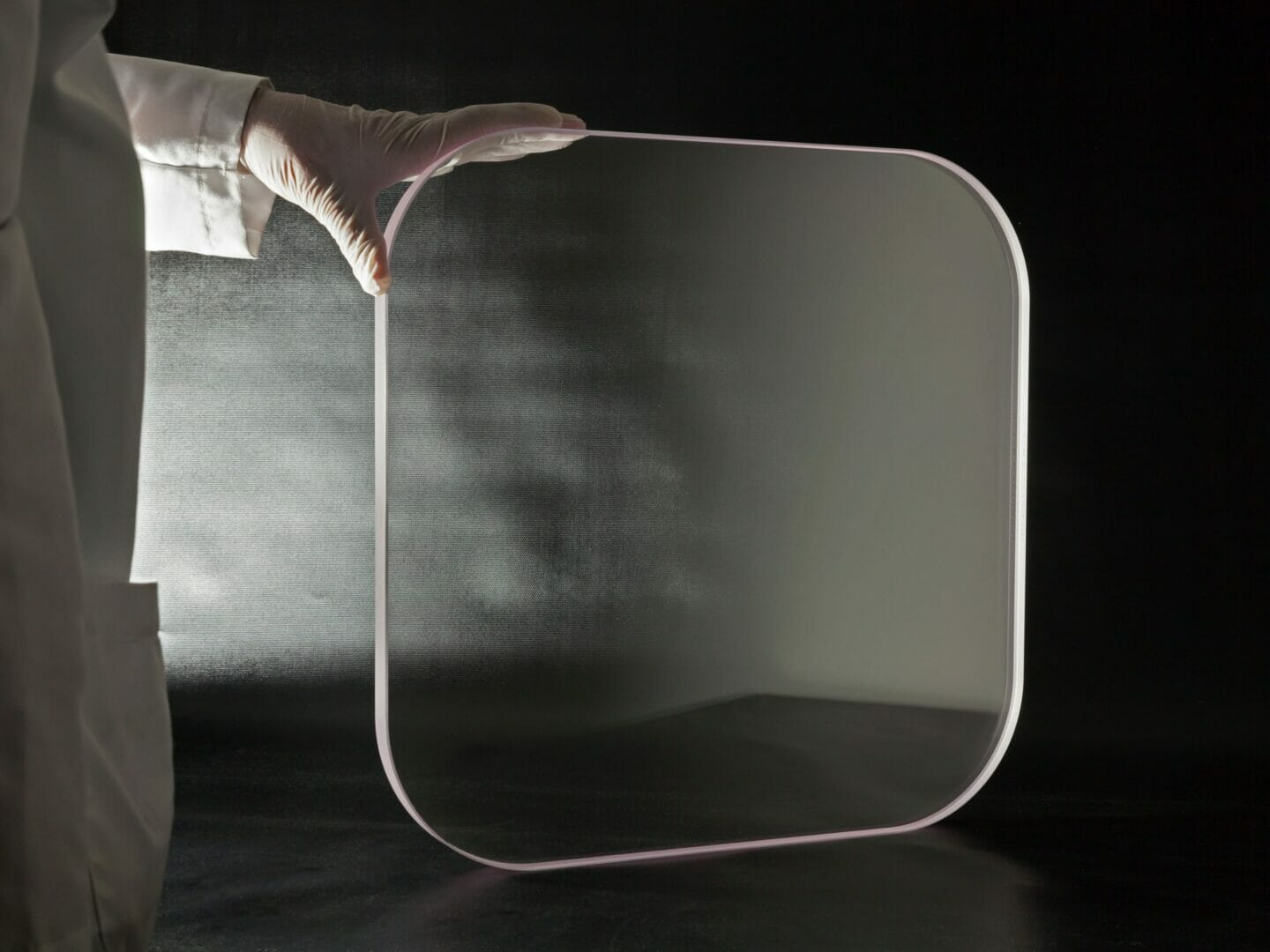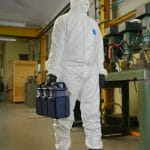Mike Albrecht & Joe Salemi, ZYGO, Middlefield, CT, USA
As intelligence, surveillance, and reconnaissance (ISR) sensor technology evolves and mission requirements become more rigorous, increasing demands are placed on high-precision windows to deliver exacting levels of performance and reliability.
ISR applications often use infrared (IR) and multispectral sensors to collect information from target locations and identify objects in high resolution. ISR windows must demonstrate superior performance to avoid compromising mission success, and because they need to withstand extreme operating conditions, careful control of the manufacturing processes is imperative to ensure strong windows and pristine optical surfaces.
Sapphire is extremely durable and transmits over a broad wavelength range of light, making it an excellent choice for ISR optical windows. Additionally, this scratch-resistant material can withstand severe environmental conditions and temperature changes, while demonstrating excellent chemical resistance and a very high Knoop hardness.
Selection of a qualified window manufacturer is particularly important when sapphire is the optical material of choice because it presents a number of challenges for manufacturers. Its extreme hardness, high strength, and fracture toughness make it difficult to turn an unfinished material blank into a high-performance optic using typical window fabrication processes.
To produce a superior product on time and within budget, the following criteria should be used to evaluate potential suppliers before placing an order for high-quality sapphire windows.
MATERIAL KNOWLEDGE
Sapphire material production technologies include the Kyropoulos method, Edge Fed Growth (EFG) method, and Heat Exchanger Method (HEM). Each produce sapphire with different specifications such as size, thickness, and inclusions. The raw material blank’s crystal orientation determines certain window characteristics. For example, a-plane sheets have historically been available in larger sizes than c-plane sapphire. However, a-plane sapphire is birefringent, while c-plane is not.
Your chosen supplier should be familiar with raw material characteristics and should be able to help select the most appropriate material for the project at hand. They should also have a profound understanding of how raw material properties impact manufacturing processes and overall performance.
DESIGN EXPERIENCE
Custom windows used in mission-critical applications require careful engineering to ensure optimal performance under a wide variety of operating conditions, which therefore necessitates in-house expertise in both design and manufacturing processes. An experienced engineering team understands the effects of manufacturing processes on strength, optical performance, and reliability of the window. An ideal ISR window supplier can design tools, metrology fixtures, custom coatings, and assembly frames. Then a Finite Element Analysis (FEA) is performed to ensure the window meets specification. The manufacturer should also be capable of performing strain measurements and proof pressure testing and assembling a detailed metrology budget to ensure the highest quality windows.
Ideally your chosen windows manufacturer should have in-house design-of-proof pressure test fixtures and controls that offer the capability to test virtually any window geometry, ramp pressure up/down, as well as test one or both sides of an optic. Your supplier’s engineering team should have extensive real-world experience bringing ISR window designs to life. A supplier should also understand the benefits and trade-offs required to produce the highest-quality windows on time and within budget, and should not be seen as just a window supplier, but instead as a true design and manufacturing partner.
FABRICATION PROFICIENCY
The methods used to process a piece of sapphire ultimately determine the strength of the window. Controlled processing must take place in order to minimize sub-surface damage.
Your chosen supplier should ideally have ability to fabricate high-strength windows for tight transmitted wavefront and/or surface flatness, very good mid-spatial frequency, very low surface roughness, and less than one arc second parallelism. Sapphire manufacturing processes should ideally be qualified with a “ring-on-ring” bending test and other ASTM flexural tests.
IN-HOUSE COATING EXPERTISE
A sapphire window manufacturer that possesses in-house coating design and deposition capabilities greatly reduces logistical issues for its customers in terms of lead time and technical difficulties. ISR window coatings must typically be able to withstand harsh environmental conditions. The coating designs — in most cases — are multispectral in order to take advantage of the broad wavelength transmission range of sapphire. When procuring large-coated windows, ensure the manufacturer has the experience to guarantee thin film spectral uniformity over the complete clear aperture.
Ideally, your chosen supplier should be able to design anti-relective and dialectric coatings for UV, VIS, MIR, and multi-spectral applications, and coatings should be qualified to meet RTCA/DO-160D or military specifications. Look for suppliers with equipment that includes 72-inch coating chambers for large optical windows, and which maintain an extensive library of designs, and are also experienced with coating windows requiring EMI grids.
METROLOGY PROFICIENCY
A manufacturer must possess sophisticated metrology equipment and the necessary expertise to utilise the equipment properly in order to develop or optimize processes and to guarantee a sapphire window meets specifications. Large-aperture metrology is vital when characterizing large sapphire ISR windows. For complex designs, the manufacturer should work with customers to develop metrology processes that support the specific application requirements.
Large-aperture interferometers are the perfect tool for multiple surface testing, and they can be used to measure front and back surface, transmitted wavefront, material homogeneity, and wedge. Such metrology capabilities enable an optics manufacturer to fabricate and measure sapphire ISR windows to less than one arc second parallelism and produce matched window sets for line-of-sight applications.
VOLUME PRODUCTION AND ASSEMBLY CAPABILITY
A manufacturer of custom windows needs to have the ability and experience to scale up from prototype quantities to full production runs. In addition to the typical manufacturing resources — such as equipment and personnel — volume production requires detailed program management; consistent, well-controlled manufacturing processes; and well-thought-out tooling designs.
Many ISR programs require samples to be made from the same sapphire boule and with the same manufacturing process as the actual window product. It is important to have processes in place for document control and material traceability to maintain the fidelity of the project. A manufacturer that also possesses the ability to mount sapphire windows into frames and perform proof pressure testing of the assemblies adds tremendous value with this service, because incorrect installation will compromise the performance of otherwise excellent windows.
Look for a window manufacturer that possesses extensive New Product Introduction (NPI) experience and Design for Manufacturing and Assembly (DFMA) capability. This reduces assembly cost and delivery times by reducing touch time and minimizing the warranty return rate.
CONCLUSION
Selection of a sapphire ISR window manufacturer must be based upon a supplier’s technical competencies in a number of areas. To maximize product quality and long-term reliability, a window manufacturer needs to have the capability and experience to serve as a fully engaged design partner.








